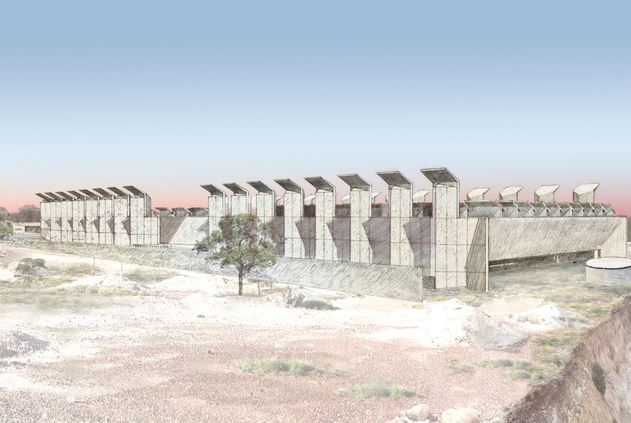Glenn Murcutt and Wendy Lewin unveil designs for underground opal museum
Architects Glenn Murcutt and Wendy Lewin have designed a two-storey, energy-efficient underground museum and cafe at the Australian Opal Centre.
Architects Glenn Murcutt and Wendy Lewin have designed a two-storey, energy-efficient underground museum and cafe at the Australian Opal Centre.

Architect Glenn Murcutt has over the years chosen the northern NSW mining town of Lightning Ridge as a study site for his third-year UNSW Architecture students, thanks to its wild and barren landscape that resembles a desert moonscape.
“We want students to understand the element of responsibility they have to place, to flora and fauna; to design in response to place and not produce architecture of imposition,” says Murcutt, UNSW Professor of Practice. “They must deal with climate, humidity, solar forces, specific topography, flora, fauna. It’s a level of responsibility that all architects should have.”
So it was logical that Pritzker Prize-winner Murcutt and architect Wendy Lewin have chosen the town as the site for a $34 million two-storey, energy-efficient underground museum and cafe at the Australian Opal Centre.
The museum will be built on a three hectare site on the Three Mile opal field at Lighting Ridge, designed entirely off grid, self-regulating for temperature and humidity, and self-sufficient for power and water.
It is expected to become a subterranean study site for UNSW architecture students and design professionals, as well as a centre for research, science, art, tourism and cultural activities in one of the state’s most disadvantaged but culturally diverse regions.
“The building will have its own waste management and water supply, and we will develop our own power. The building is pretty much autonomous. We had the possibility to tap into Great Artesian Basin which we can use for warming the building in winter. It’s a self-sustaining building – it has to be,” says Murcutt.
"The system we are using has moisture in plates in wind shafts that cools the air as the air comes over the plates, like a natural air-conditioning.”
Murcutt, who has been running a regional studio for third-year UNSW Architecture students for 12 years, says many of the study sites chosen, including Lightning Ridge and Kemspey, have extreme climatic variations.
“Students can’t design buildings that just pump out ordinary air-conditioning into buildings. It’s a great challenge for students to use less energy,” he says.
UNSW students from the Faculty of Engineering have been involved, with Photovoltaics and Solar Energy graduate Han Gao completing a thesis in photovoltaic power opportunities to supply energy to the building
“In summer cooler internal thermal environment is supported by the malqafs introduced into the long walls,” said architect Wendy Lewin. “This is an ancient passive ventilating and cooling system used widely in arid areas of the Middle East. Malqafs promote air movement by ‘catching’ prevailing breezes through ventilated walls.”
Visitors will be able to descend into the opal mines through the subterranean spaces, with roughly 50% embedded in the earth. Site preparation and excavation is now finished and the museum is expected to be completed in 2020.